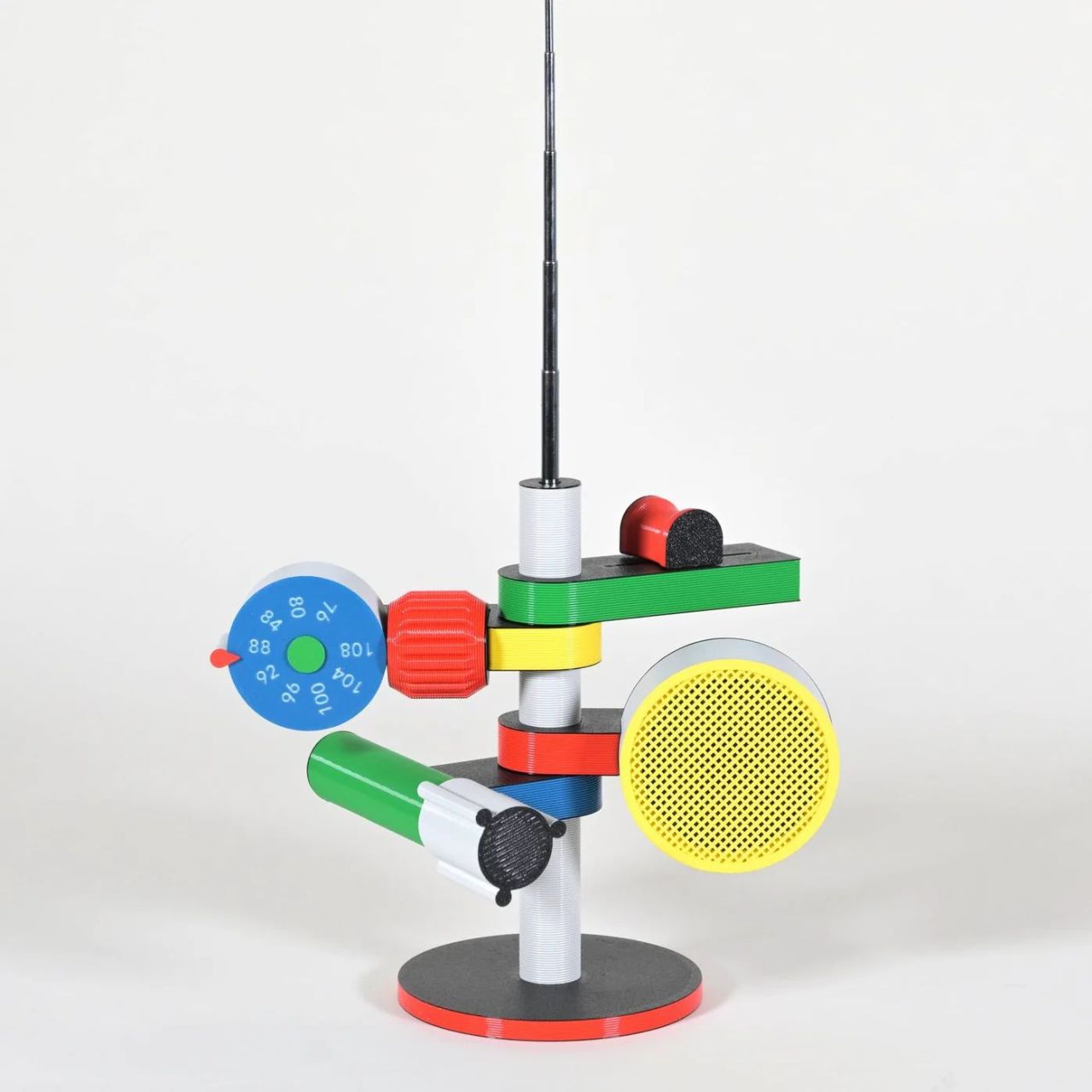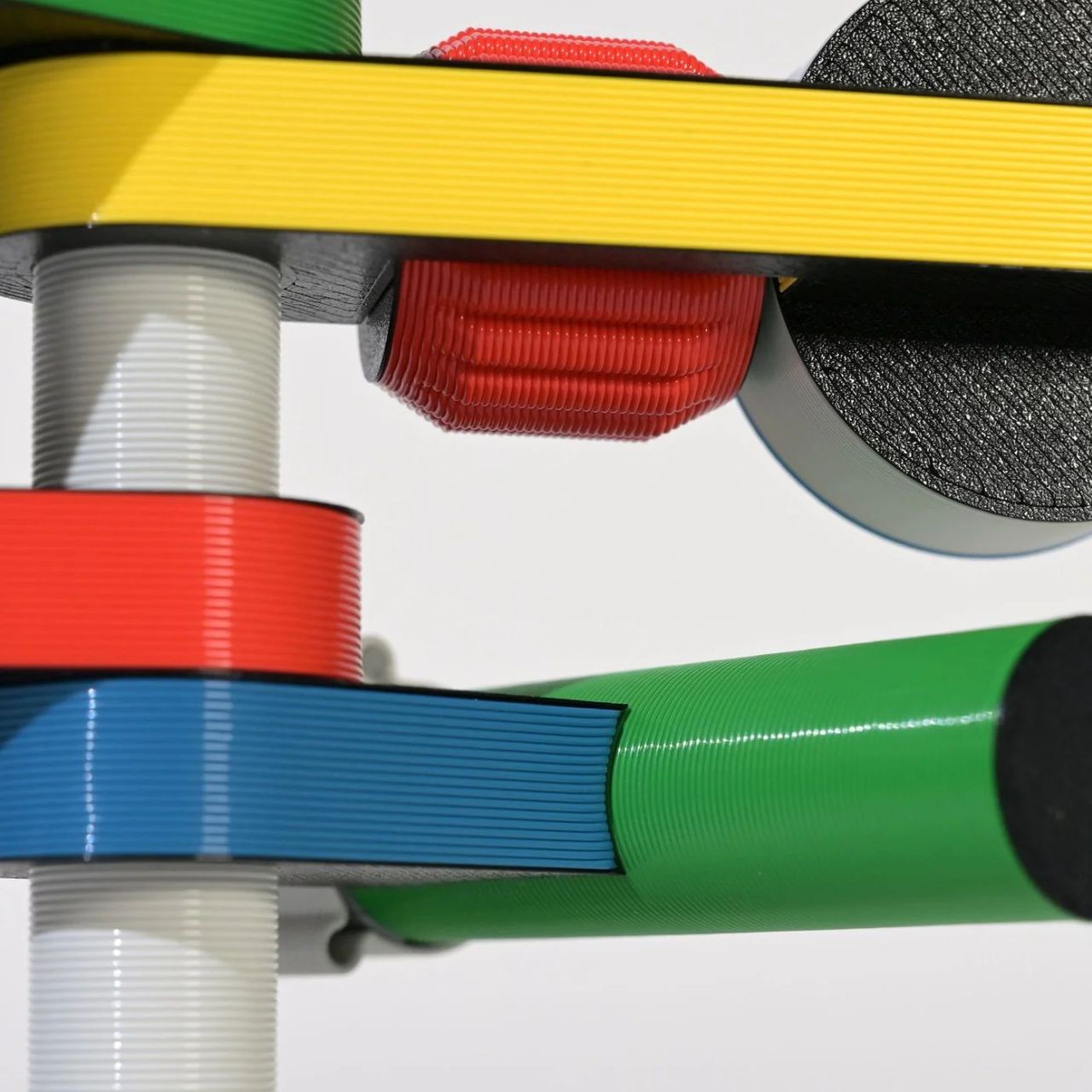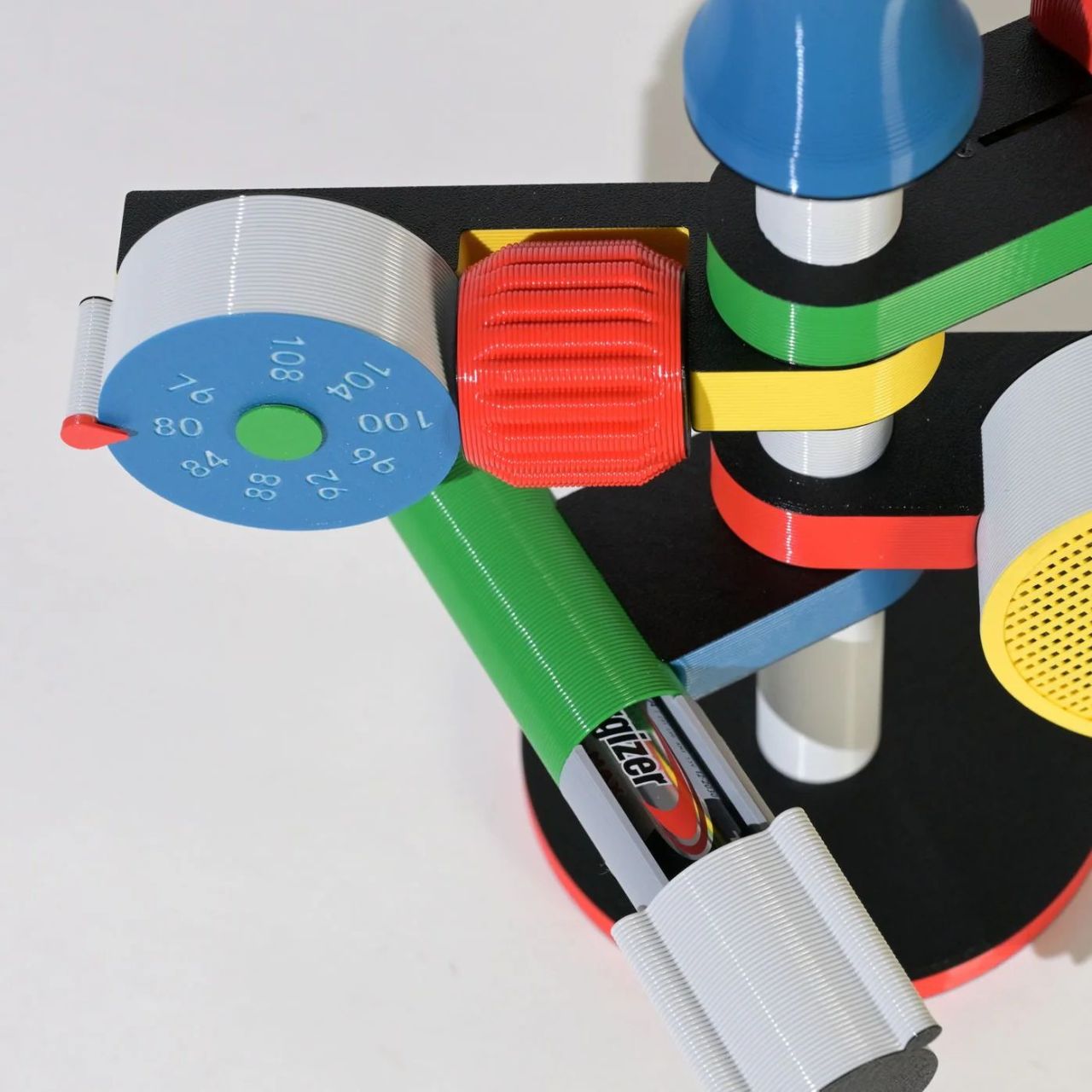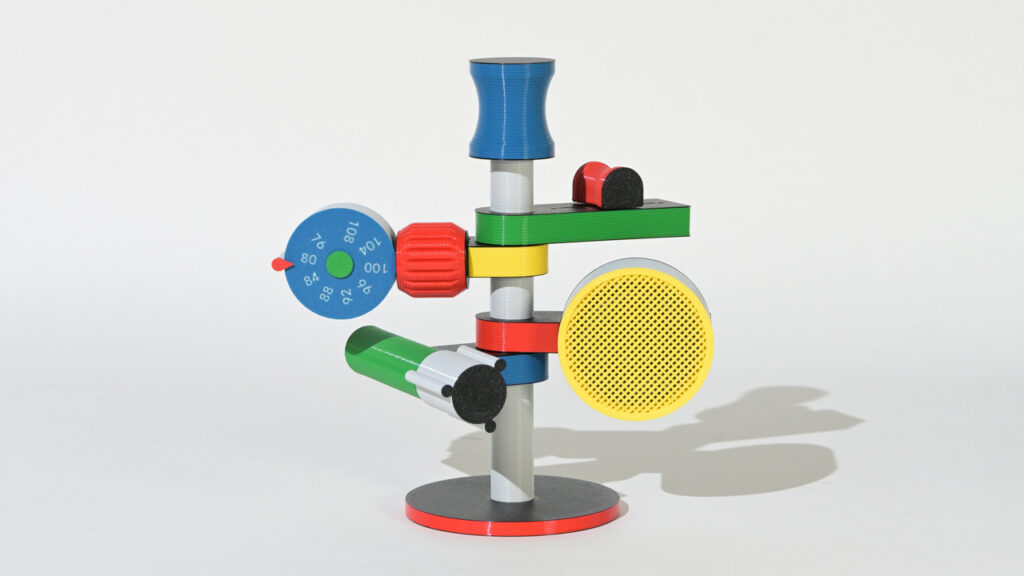The era of listening to the radio for entertainment may be gone, but the Japanese designer behind the Anomalo project, Shinkōgeisha, offers a fresh take on traditional FM radios. Rather than hiding all components inside a rectangular box, he uses digital fabrication to reimagine the radio’s layout, arranging all the parts in unconventional ways and highlighting them with vibrant colours.
This FM radio puts its antenna at the forefront instead of hiding it. All the components and controls extend from the antenna like limbs, with wires running inside like blood vessels. The design feels nostalgic, just like a toy robot with a bold, playful twist.
Anomalo radio consists of five stacked layers, each serving a different purpose. Just above its circular base is the first “limb that is shaped like a rocket or flashlight. When a user pulls the tab, it reveals the battery’s casing. The second limb featuring a bright yellow grille hides the speaker of the radio.
Above that sits the third limb, which resembles a compass dial marked with frequency numbers. It works in combination with a red spinner to let you fine-tune the station. The fourth limb features a red slider for volume control. Finally, the radio is capped by a circular blue element that holds all layers together and neatly houses the retractable antenna.
Also Read: Cabasse Launches High-End LA SPHERE EVO Loudspeaker With Built-in Amplifiers
The designer took common FM radio parts typically made cheaply in factories and rearranged them into a unique form to make the Anomalo radio. By using simple, mass-produced components, they show that small makers using digital fabrication do not have to stick to the uniform look of modern electronics. You can purchase the radio from New Craft Shop for $930 right now.
As digital and basic technologies become more accessible, people now have the power to create a wide variety of electronic devices. Designs that once seemed strange and were rejected for not being efficient can now be made again, just like this unique FM radio.







Via: designboom
Follow Homecrux on Google News!




